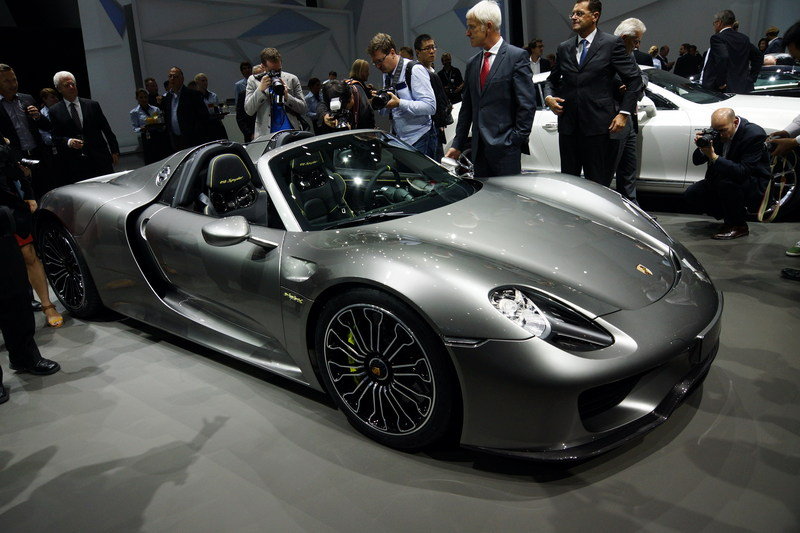Denialism rules.
The first time a driver lapped the famed Nürburgring racing circuit in under 7 minutes was in the mid-1970s when Niki Lauda accomplished the task in a Formula One Ferrari. No, you could not buy one at the corner store. Lauda almost died at the ‘ring in 1976 when his car crashed and was consumed, along with Lauda, in flames. Niki survived and added two more championships to his total, but accomplished something far better for the sport. His fiery crash saw to it that henceforth no more Formula One races would be held at the 13 mile circuit, built in the 1920s when tires were slim and drivers were fat. Getting speedy help to an injured driver on a circuit so long was simply not possible.
But the fascination of the circuit refused to go away and, to this day, you can pay up a few Euros and have at it on a nice drive through the beautiful Rhineland mountains.
Niki was driving the old fashioned way, with three pedals and a gearshift. There were maybe two or three other drivers in the world who, given comparable machinery, could match his time. Certainly not you or me.
But Porsche well knows the marketing cachet of the ‘ring, so in 2013 they asked their racing driver Marc Lieb to have a go in a 918 Spyder which you absolutely could buy at the local Porsche dealership, albeit after a wait of a few months while they made it back in Zuffenhausen.

Lieb’s 918
That 918 Spyder only had two pedals – go and stop – and Porsche’s magic Doppelkupplung transmission, a device so complex that for once the German love of complex nouns usually reserved for simple descriptions was entirely justified. We know it as the PDK (Pretty Damned Kwik) and it first saw the (retail) light of day on late 1990s 911s. Today you can even get it on some Honda motorcycles! Anyway, the PDK provided two gearboxes in one casing, one waiting for the upshift, the other for the downshift. As there was no longer any need for transmission fluid to confer the force which advised the direction of the change, along with the attendant delays dictated by the laws of hydraulics, the gearbox shifted right now, faster than any human could shift a traditional manual box, like the one Lauda used. And Lieb delivered in spades, returning a time of 6 minutes and 57 seconds and you can see the whole glorious thing here. What that video does not tell you is that when Lieb tried in a regular stick shift version of the 918 he could not break 7 minutes …. Technology had obsoleted the skill of gear shifting for ever. You may still enjoy shifting, but you will never be as fast as a PDK automatic. One thing remains unchanged. Neither you or I could remotely match Lieb’s lap in that off-the-shelf Porsche, but the technology makes a better driver of us all.
This somewhat lengthy preamble brings us to an interview with famous Leica photographer Ralph Gibson, excerpted below. You know, the Ralph Gibson of such great 1960s works like The Somnambulist and Deus Ex Machina, which brought his own special vision of the world to the printed black and white page. Of course it was black and white. And in a book. What did you expect?
All of a sudden the software that makes everybody in the world a photographer also makes everybody’s photographs look exactly the same. My iPhone shots aren’t any better than yours and yours aren’t any better than the person next to you. There’s a homogeneity that comes with this.
I want to know how this technology, which we will consider to be a formal construct, impacts what I’m able to say in my photographs, which is the art that’s discussed in terms of form and content. Let’s say the form is digital imagery. How does this speak differently than analog film, silver gelatin? There is a difference, and it has to do with the fact that the image is somewhat compressed, in terms of its perspective. The laws of perspective were invented in the Renaissance. Prior to that time, painting was entirely two dimensional. That particular illusion of space, from the picture plane back, as we’ve grown accustomed to it in film, is foreshortened on the digital sensor.
What has happened to poor old Ralph, in all this denialism, is that his gear (shifting) skills have been obsoleted and, man, does he rue that loss. The premium his ability confers to manually focus, expose just so and brew the developer as he had learned over decades – all of these have become irrelevant. Stated differently, the iPhone is Gibson’s PDK. Not for one moment can he tell an iPhone picture from his Leica film snaps, although there will be hints. The cell phone version will be sharper, better exposed and come with lots of data missing in his film version. And it can be sent around the world in a matter of seconds, not days or weeks later in some stuffy old book decorating a coffee table.
Film cameras, stick shifts. So much technological detritus. Technology makes a better photographer of us all.